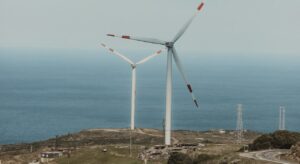Geothermal power plants operating on dry steam
Steam power plants run primarily on hydrothermal steam. The steam goes directly to the turbine, which feeds the generator that produces electricity. The use of steam eliminates the burning of fossil fuels (it also eliminates the need to transport and store fuel). These are the oldest geothermal power plants. The first such power plant was built in Larderello (Italy) in 1904 and is still in operation today. Steam technology is used at the Geysers power plant in Northern California, the largest geothermal power plant in the world.
Geothermal power plants powered by steam-hydrotherms
Such plants use superheated hydrotherms (temperatures above 182 °C) to produce electricity. The hydrothermal solution is pressurized in an evaporator to reduce the pressure, so that part of the solution evaporates very quickly. The resulting steam drives a turbine. If there is liquid left in the tank, it can be evaporated in the next evaporator to produce even more power.
Geothermal power plants with a binary power generation cycle.
Most geothermal areas contain water of moderate temperatures (below 200 0C). Binary cycle power plants use this water to produce power. The hot geothermal water and a second, additional liquid with a lower boiling point than water are passed through a heat exchanger. The heat of the geothermal water evaporates the second liquid, whose vapors drive turbines. Because it is a closed system, there are virtually no emissions to the atmosphere. Temperate water is the most common geothermal resource, so most geothermal power plants of the future will run on this principle.
Steam and hot water reservoirs are only a small part of geothermal resources. Earth’s magma and dry solid rock will provide cheap, clean, virtually inexhaustible energy once the proper technologies are developed to harness them. Until then, the most common producers of geothermal electricity will be binary-cycle power plants.
For geothermal electricity to become a key part of the U.S. energy infrastructure, methods must be developed to reduce the cost of generating it. The U.S. Department of Energy is working with the geothermal industry to reduce the cost per kilowatt hour to $0.03-0.05. New geothermal power plants with a capacity of 15,000 MW are projected to emerge in the next decade.


